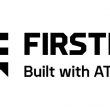Lifeblood
In his January 2004 State of the Union address, President George W. Bush pitched a plan that called for the implementation of electronic error prevention systems at all U.S. hospitals to reduce incidents of patients being improperly treated. As Congress continues to grapple with the proposal, medical centers nationwide are skipping the debate and embracing wireless technology like never before, in order to ensure sound patient/physician interactions.
Health-care systems’ foray into wireless actually began with implantable cardiac telemetry devices in the early 1960s. During the early years of adoption, medical practitioners learned that electromagnetic interference, or EMI, could negatively affect the performance of such devices.
The Food and Drug Administration’s Center for Device and Radiological Health (CDRH) working group began studying the issue in the late 1960s when concerns surfaced over EMI’s effect on cardiac pacemakers. It wasn’t until decades later, in June 2000, that the FCC established the Wireless Medical Telemetry Service, which allocated the 608 MHz to 614 MHz, 1395 MHz to 1400 MHz and 1429 MHz to 1432 MHz frequencies primarily for use by medical telemetry devices.
Such devices also can use the Medical Implant Communication System (MICS) band (402 MHz to 405 MHz), which was allocated by the commission for use by ultra-low power, unlicensed, mobile-radio devices. Among the devices that use this band are implantable cardiac-monitoring devices — developed by Minneapolis-headquartered Medtronic — that wirelessly communicate patient heart-health data to a monitor located at home or in a clinical setting. The monitor then transmits data packets over a wired line to the company’s CareLink software database, which is remotely accessed by nurses. The devices also deliver therapy to thwart sudden cardiac arrest — by shocking the heart back into rhythm — which accounts for 300,000 to 400,000 deaths annually in the U.S.
The key attribute of the MICS band is that it specifically supports implanted medical devices and permits the use of such devices without causing interference to other users of electromagnetic radio spectrum, according to Len Twetan, Medtronic’s director of CareLink Development and formerly its director of wireless communication systems.
“I think the FCC realizes you really need a band set aside for medical devices because of the criticality of the communications going on, for one,” Twetan said. “And you really don’t want to create a Wild West scenario of medical devices competing with the cell phone or a PDA.”
But FDA regulations mandating manufacturers to develop devices capable of operating in this band do not exist, said Don Witters, chairman of the CDRH’s electromagnetic compatibility working group.
“We do not generally seek to specify which frequencies must be used for a specific device,” he said. “It is up to the manufacturers to determine that because they are responsible for the ultimate safety and effectiveness of the medical device.”
Instead, the CDRH released guidelines in January that address the safe and effective use of radio frequency (RF) technology in medical devices and asked industry players to submit written comments on the issue by April 2.
“It is a special area that needs to be addressed in certain ways, with focus on the device, what it is doing and how well it does it in an environment where there is more wireless technology being used,” Witters said.
REDUCING DEADLY ERRORS
Even without ironclad regulatory requirements, health-care enterprises continue to adopt wireless systems. Wireless system expenditures by the health-care sector totaled about $1.8 billion in 2005 and are expected to reach more than $7 billion by 2010, according to market research firm Kalorama Information. Wireless local area networks (WLANs), currently dominant the market with a 36.4% marketshare.
The widespread adoption of wireless may be a result of health-care facilities’ attempts to reduce medical-dispensing errors that kill 98,000 Americans every year, according to the National Academy of Sciences’ Institute of Medicine. The Department of Veterans Affairs (VA) hopes to reduce such errors by using the Barcode Medication Administration System (BMAS) — a wireless application developed by IT technicians and deployed at its hospitals nationwide.
At the Jesse Brown VA Medical Center in Chicago — a 188-bed acute-care facility built in 1953 — medical and psychiatric professionals care for nearly 62,000 veterans, with about a half million patient visits annually. It is one of the VA health-care system’s largest facilities and the first to implement the BMAS, more than five years ago, said Felton Smith, the center’s assistant chief of information resources and management services.
The BMAS is supported by the center’s WLAN and consists of an 802.11 Wi-Fi hand-held scanner and a ruggedized Panasonic Toughbook computer, both of which are attached to a mobile medication cart.
Patients are provided a bar-coded wristband, which is inscribed with identification data. The same bar code is printed on pharmacy-distributed medication and kept in password-coded drawers in the medication cart; the practitioner types the passwords into the system using the Toughbook. A nurse wirelessly scans the patient’s wristband to retrieve data from the VA’s computerized patient-record system, which is then viewed via the laptop. The scanner also sends information to the system to record patient/nurse transaction data, including date and time.
VA nurses are the core users of the BMAS, said Letitia Truss, a licensed practical nurse in Jesse Brown’s transition ward — where patients recover from procedures while waiting for a medical release. Truss uses the system to dispense medication to patients on a daily basis.
“We scan the bracelet, and all of this information will pop up on the computer: the patient’s name, birth date, diagnosis, allergies,” Truss said. “And at that time, we verify verbally with [the patient] his or her name or social security number, in case there are similarities in the system.”
Truss relishes the fact that she no longer has to apportion medicines on an individual patient basis because the distribution is pre-allocated by the BMAS. This affords her additional time to spend consulting with patients and making them more comfortable. The BMAS also offers her a safety net when distributing medication to patients because “once you give a patient medication, you can’t take it back,” she said.
She admits, however, that the hospital’s network sometimes goes down, leaving the BMAS inaccessible.
“It puts us on hold sometimes,” Truss said. “If it actually goes down, we go back to the paper process.”
Another limitation is that the hospital’s WLAN only is available in the in-patient wards, where approximately 25 access points are installed, said Richard Law, the medical center’s biomedical engineer. Overall wireless coverage is good, he said; however, the hospital was built 54 years ago, when RF communication wasn’t an architectural design consideration. As a result, rooms at the end of corridors often have coverage problems. So antennas are mounted every few feet on the ceiling throughout the ward to carry communications.
Hospital administrators also have access to the wireless network and are armed with personal digital assistants (PDAs) for e-mail and Internet access, but the system doesn’t permit guests to log on because of Department of Defense information system protocols. This means that family members or non-VA visiting physicians are out of luck if they need wireless access while at the facility.
RF identification, or RFID, has been deployed by several hospital systems, including at New York-Presbyterian/Weill Cornell Medical Center in New York City to manage medical devices and supplies. But the VA currently does not use RFID.
“We plan to purchase some RFID [system] in the coming year,” Law said. “It’s in our 2007 budget.”
SECURITY AND COVERAGE CHALLENGES
A reliable and secure wireless network is key for these types of health-care deployments, said Alan Cohen, Cisco Systems’ senior director of mobility solutions. The company offers health-care enterprises a scalable wireless network tailored to medical applications, including digital picture archiving, electronic medical record-keeping and computerized physician-order entry. A WLAN controller built for 802.11b/g devices supports these applications.
There are unique considerations for a WLAN deployment in a hospital setting, Cohen said. First, it must meet the terms of the Health Insurance Portability and Accountability Act, or HIPAA, enacted by Congress in 1996 to establish national standards for electronic health-care transactions and health-data privacy. In addition, hospitals must deal with a proliferation of devices accessing the network, from laptops and tablet computers to hand-held scanners and telemetry devices.
Hospital administrators also must consider the architectural makeup of the building and whether it is a legacy or greenfield environment. Older hospitals often are not RF-friendly, so in-building coverage often is a major issue — one that the VA hospital tackled by installing multiple antennas, as noted above. Decision-makers also must decide whether the network should support voice, location technology, multiple user groups and guest access for hospital visitors or contractors — a key for physicians who work on multiple campuses.
“When you go into [a hospital] to get a guest badge, [some receptionists] can actually give you the password to the guest network and pre-determine how much bandwidth you get, security level and the timing,” Cohen said. “It’s done in a secure way so you can never access the hospital’s main network. You’re on a secure guest network.”
Boston-based Brigham and Women’s Hospital (BWH) uses Cisco infrastructure to drive its WLAN. BWH is a 747-bed teaching affiliate of Harvard University’s medical school.
According to Steve Flammini, chief technology officer of Partners Health Care Boston, which manages BWH, the hospital has an 802.11b WLAN and approximately 600 Cisco access points installed. The network provides strong user authentication to prevent any unauthorized use of the WLAN — an important consideration in any medical setting where data privacy is crucial.
Flammini admits his team was cautious, at first, about deploying a wireless data system.
“We had some concerns about putting mission-critical applications on wireless,” he said. “As it turned out, it’s gone very well.”
Nevertheless, the deployment had its challenges. The ability to manage quality of service, i.e., the control mechanisms to prioritize traffic, was immature at first, and the overall level of manageability compared to wired LANs was limited. The team also had to make some educated guesses in terms of how much capacity actually was needed to support the clinical work flow in the absence of diagnostic tools.
Effective spectrum planning and management ultimately eased the deployment. Physical characteristics of the environment were taken into consideration, and trade-offs were made with respect to power output, range and placement of access points and wireless devices. Flammini attributes a large share of the hospital’s success with its WLAN implementation to solid spectrum management.
The Nursing Electronic Med Administration Record was a major clinical driver for BWH’s wireless network. The application, written by the hospital’s IT department, involves the hospital’s medical management loop, which starts with physicians writing prescriptions and ends at bedside administration. The medications, each patient’s wristband and the employee ID of the nurse(s) assigned to the patient are tagged with barcodes. Nurses are armed with wireless-enabled HP laptops and a hand-held barcode reader that connects to the PC via Bluetooth technology to scan the medicine and the patient barcodes at the point of administration to prevent errors — similar to how the VA system operates.
“Medical errors are a very serious problem in this country,” said Jonathan Teich, a professor of medicine at Harvard University and an attending physician in emergency medicine at BWH. “We now have a wireless capability that will let the nurse scan the barcode on patients’ wrist and on the medication to make sure the medication belongs to the patient. That’s been a substantial help in reducing the kind of errors that can occur.”
‘HERE’S WHAT THE WOUND LOOKS LIKE’
BWH also uses wireless technologies to deliver medical alerts, which are transmitted directly to physicians’ hand-held devices. An automated, in-house-developed database holds a vast catalog of medical specifications. When laboratory tests are completed, each is checked against the specification embedded in the system to detect urgent patient conditions. Should such an event occur, the system would fire off an alert to a pager or a text message to a mobile phone, or would trigger a pop-up screen when the patient’s doctor(s) sign in to the computer to access the clinical system, Flammini said.
“When a result comes out, our doctors can find out an urgent situation is developing as much as an hour or two [before] they otherwise would,” Teich added.
Physicians also use hand-held devices to access a wide variety of reference materials, including drug and diagnostic information, instead of turning to the staple pocket medical handbook. As an example, Teich downloads RSS feeds to his PDA from medical journals, including the “Archives of Internal Medicine.”
“I have a quick guide to emergency procedures, and then, in addition, there are services that supply the latest information from the journals, which can come right to the hand-held,” he said.
Unlike the Jesse Brown VA hospital, BWH does deploy RFID-based location technologies to track costly biomedical equipment — but only sparingly. Although it is important to be able to locate the hospitals equipment at any given time, Flammini emphasized RFID still is a maturing technology.
All of these technologies should be used for emergency triage events, Teich said, when hundreds of patients may be injured during a disaster, so that on-scene medical personnel can use wireless devices to prioritize patients based on the severity of their wounds, as well as record administered therapies. Teich added that such abilities also are important for transferring collected data from the scene to the receiving hospital’s IT systems. Without these technologies, on-scene medical personnel are forced to manually record each patient’s low- or high-severity status.
“But it’s very hard to keep those patients in track and ensure we are handling all of the most serious cases right away,” Teich said.
U.S. public health agencies should invest in wireless, said Margo Edmunds, vice president of the health-care consulting firm Lewin Group. Edmunds — who also is a Johns Hopkins University professor — consults on disaster drills held in response to the Department of Homeland Security’s National Response Plan for unified management of federal, state and local government agencies during disasters. She was the evaluator for Johns Hopkins’ two-day, bio-terrorism field exercise — held July 2003 on the university’s campus in Baltimore — which tested the response of public safety, city agencies and hospitals during a mock biological-agent release.
Hospital workers focused on surge capacity, the influx of patients into one hospital system. It is a major public-health issue, Edmunds said. Hospitals often lack the extra beds needed, so temporary facilities are erected for triage staging areas. Wireless networks are critical in these situations to establish remote communications.
The University of California, San Diego (UCSD) is managing a similar initiative, the Wireless Internet Information System for Medical Response in Disasters project, or WIISARD. The research project, funded by a $4 million grant from the National Institute of Health’s (NIH) National Library of Medicine, takes off-the-shelf wireless technologies and adapts them for medical triage situations.
The most recent WIISARD drill was held in August 2006 on the UCSD campus and involved volunteer victims and first responders from San Diego County, said Bill Griswold, a UCSD professor of computer science and engineering. The system deployed for this drill included high-speed wireless networks for disaster sites, location systems for first responders, integrative systems for front-line supervisors, a command center system and vital sign monitors for victims.
Griswold said on-scene first responders and public-health personnel were armed with 802.11b Wi-Fi tags, dubbed the iTag, that were distributed to disaster victims in addition to paper-based tags. The iTag (see photo on this page) has several buttons users can select to record victims’ triage status.
Wi-Fi-enabled PDAs equipped with a barcode scanner were used to scan barcodes on paper tags and record the treatment, the health status and the medicines distributed to each specific victim. It also was used to query patient information, Griswold said.
Supervisors were given Motion Computing’s Wi-Fi-enabled tablet PC equipped with an outdoor display that is easier to view in bright sunlight. They imputed data about the evacuation scene and scanned victims’ barcodes before they were evacuated by ambulance, in order to track which hospitals would be receiving specific patients.
All of the data was transferred to a central database housed at the university, which then transmitted the data to the incident command center. Data was mapped and victim status scrutinized through this system by incident commanders armed with laptops, Griswold said.
A Wi-Fi mesh network supported the data transfers. Researchers placed a dozen access points on tripods and in trees at the scene and deployed EV-DO for Internet access so first responders could retrieve weather and other incident data.
Griswold said his team recently applied for a three-year grant extension from NIH to continue the project because this type of technology is lacking in current medical triage systems and municipalities’ disaster-preparedness plans. In reality, he wonders whether the technology actually will be adopted, citing a lack of federal funding trickling down to the local level.
“I was talking to a fire chief, and he said, ‘Bill, I have enough in the budget to buy a much-needed fire truck or your system, and I’d like to have both,’” Griswold said. “But he admitted because of funding, the fire truck would take priority.”
Edmunds believes emergency physicians will drive the adoption of wireless technologies for use in medical triage because hospitals already are wired and wireless, as seen at the VA and at BWH. Medical personnel who ultimately receive data from the field are tech-savvy and will begin to insist it is used to help them cope with incoming patients if a major disaster again hits the U.S.
“Those are the guys who are going to be getting the pictures from the cell phone that says, ‘Here is what the wound looks like,’” she said.
MEDICAL USE OF WIRELESS
| Wireless technology in health care | Market in 2005 (in millions of U.S. dollars) | Market in 2010 (in millions of U.S. dollars) | Percent share of the technologies, 2005 | Percent share of the technologies, 2010 | Percentage CAGR* 2005-2010 |
|---|---|---|---|---|---|
| RFID | 173 | 1215 | 9.7 | 16.6 | 48 |
| Bluetooth | 580 | 1443 | 32.4 | 19.8 | 20 |
| Zigbee | 50 | 821 | 2.8 | 11.2 | 75 |
| UWB | 50 | 269 | 2.8 | 3.7 | 40 |
| WLAN | 650 | 2064 | 36.4 | 28.3 | 26 |
| WMAN | 85 | 212 | 4.8 | 2.9 | 29 |
| WWAN | 200 | 1282 | 11.2 | 17.5 | 45 |
| Total | 1788 | 7305 | 100 | 100 | 33 |
| * Compound annual growth rate Source: Kalorama Information |
|||||

















